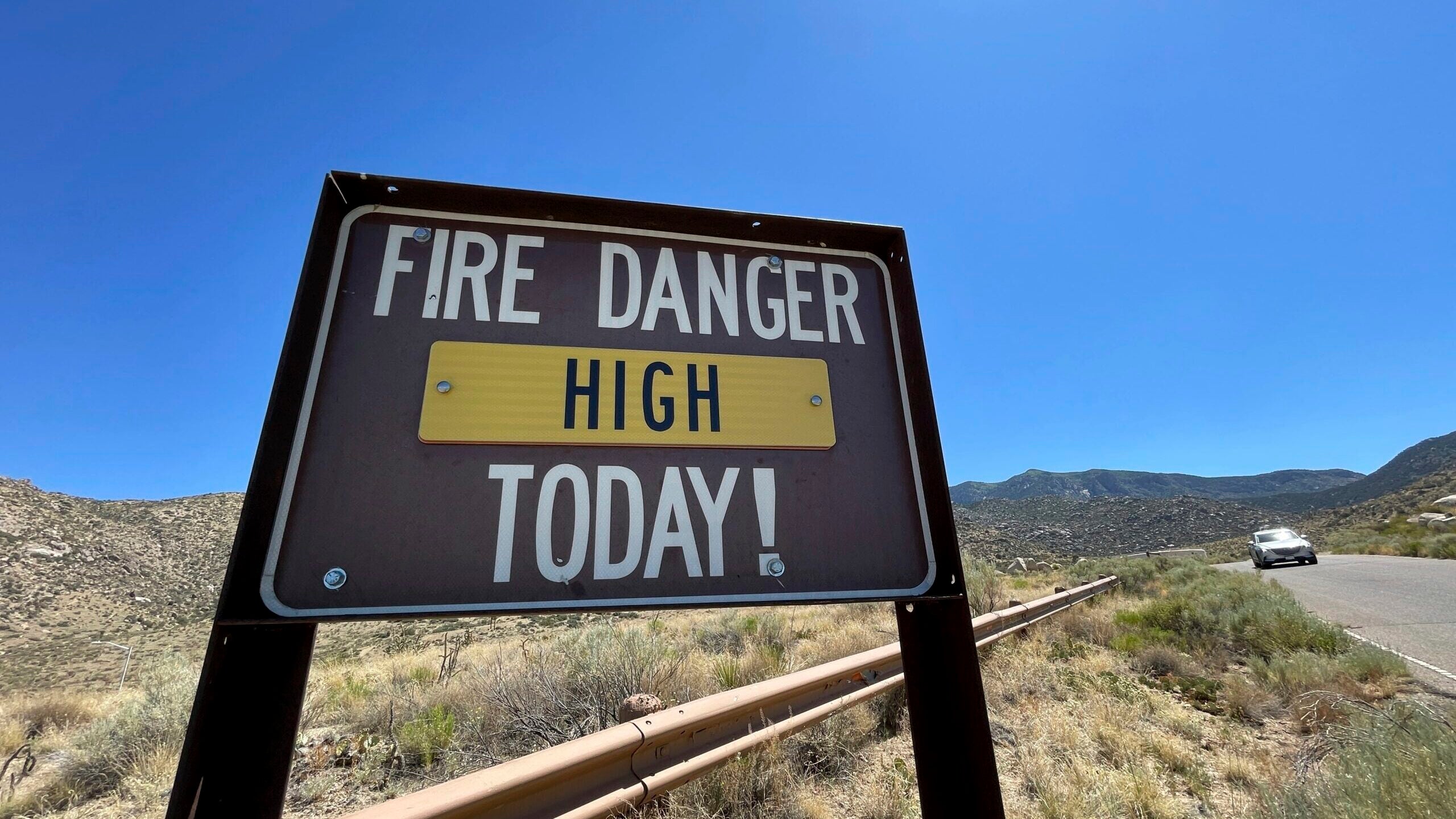US forest managers urge revelers to swap fireworks for Silly String, but some say not so fast
ALBUQUERQUE, N.M. (AP) — Smokey Bear said it best: “Only you can prevent wildfires.”
Following in the footsteps of their famous mascot, U.S. Forest Service managers in the drought-stricken Southwest are urging people to swap their fireworks this Fourth of July for glow sticks, noisemakers and cans of red, white and blue Silly String.
Not so fast, say some environmentalists. While it’s worth encouraging folks not to use fireworks amid escalating wildfire danger, they say it’s kind of silly that federal land managers would suggest using aerosol cans of sticky party string out in nature.
The advice began to pop up in recent weeks, with regional forest officials and the New Mexico State Forestry Division pumping out public service announcements offering alternatives aimed at curbing human-sparked blazes.
They used a template that echoed similar advice from the National Fire Protection Association and even American Red Cross chapters in other states.
“These are alternatives for children and young people to do in lieu of fireworks in their neighborhood or on their property. That way we’d like to keep things contained to your property and your neighborhood,” said George Ducker, a spokesman for the State Forestry Division. “We’re certainly not advocating folks go out into the forest and, you know, shoot off Silly String.”
But if they do, the Forest Service has one request: Leave no trace.
However people choose to celebrate, the rules and regulations need to be followed if they are on national forest land no matter if it’s July Fourth or any other day, said John Winn, a spokesman for the federal agency.
“That includes but is not limited to the restricted use of fireworks, properly disposing of garbage in garbage bins, maintaining quiet hours and cleaning up after camping or day-use activities,” he said.
Cleaning up spray streamers fits in that category, he added.
While the spray can party favors have been around since the 1970s, manufacturers keep their recipes under wraps. In general, the string is made of a polymer resin, a substance that makes the resin foam up, a solvent, some coloring and the propellant that forces the chemicals out of the can.
Authorities in Los Angeles decided to ban aerosol party streamers in 2004 on Hollywood Boulevard every Halloween because partygoers were using the empty cans as projectiles and many were left littering the streets and clogging gutters.
Towns in Massachusetts and Alabama also have adopted ordinances restricting the use of the string, pointing to problems during special events. In one New York town, firefighters who participated in a parade complained that the string was damaging the paint on their trucks.
Rebecca Sobel with the group WildEarth Guardians said party string is just one of the hundreds of seemingly benign products that pervade daily life.
“We have to be more vigilant about the chemicals in ‘everyday’ things,” she said. “Maybe the Forest Service should have known better, but it’s also hard to know what chemicals some products contain.”
She pointed to recent headlines about ‘forever chemicals’ found in firefighting foam and other common products, saying consumers have a responsibility to be aware of threats but they can’t do that if regulatory agencies aren’t being transparent or reading labels themselves.
Some consumer product sites say party string is not biodegradable. While many cans are labeled as non-toxic, the string can damage vinyl surfaces or the clear coat on vehicles.
The labels also suggest that if ingested, medical attention might be in order. That goes for humans and pets, as some of the ingredients can contain gastrointestinal irritants.
“All of this makes it inappropriate for use at our national forest recreation sites,” says Madeleine Carey, WildEarth Guardians’ Southwest conservation manager. “Many seemingly fun party products like Silly String are extremely harmful to our forests and wildlife. Mylar balloons, noisemakers and glitter are also on the list.”
The bottom line for state and federal forest managers is to prevent human-caused wildfires, Ducker said.
While some parts of the West had record snowfall over the winter and enjoyed a wet spring, forest managers said it’s uncertain whether the monsoon will keep fire danger at bay. For that reason, the messaging will continue, Ducker said.
“All it takes is a couple of weeks of really hot, dry weather and all of that stuff gets desiccated and it just becomes fuel,” he said of the vegetation that sprouted in the spring.
Overall, more than 22,000 fires have burned nearly 1,000 square miles (2,590 square kilometers) in the U.S. since the start of the year, according to the National Interagency Fire Center.
